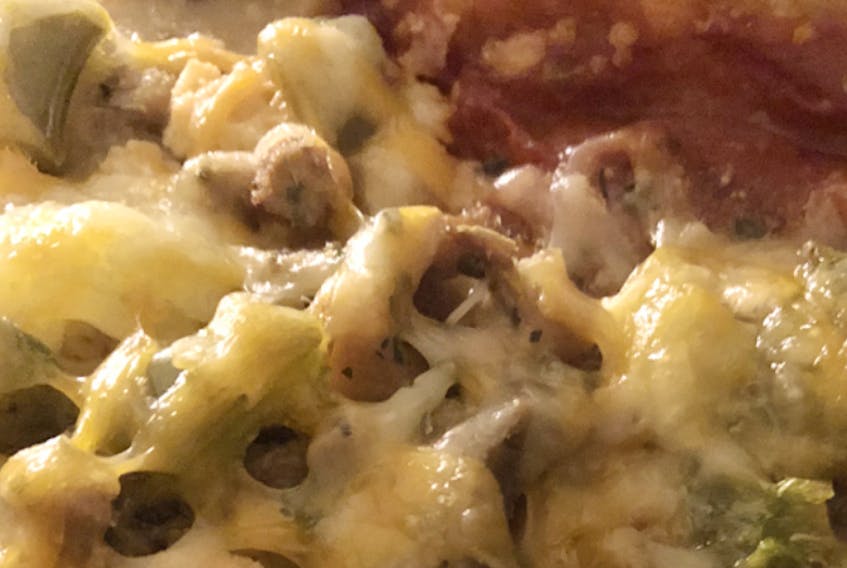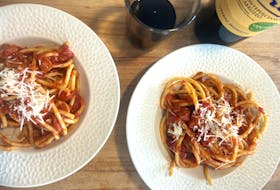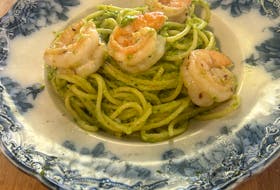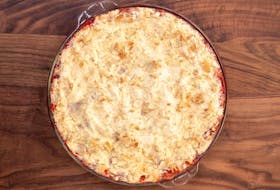
What makes a good pizza? Everyone has their own opinion on that, or so it would seem. But whether we like our crust thick or thin, like our sources Greek, American or Italian, or enjoy getting kinky with pineapple and olives as topping choices, one thing that we all tend to agree on is that there’s always a pretty huge gap between the quality of homemade pizza and the ones we can order from the local sketchy pizza joint three or four streets towards the bad part of town in college. But why is that? What is it that they do so differently that they come out with that almost perfectly round, melty, cheesy goodness? What sort of Hephaestus-like pizza forge deities live among us and whence does their power come from?
Turns out, the secret is kind of . . . up in the air, and I don’t mean that metaphorically. The answer was right under our noses the whole time; good pizza has to literally be thrown into the air with a slight spin and then caught, over and over again, to properly stretch the gluten proteins in the right directions at once to obtain that uniquely delicious crust that forms the perfect base for pizza toppings. It’s not just a fancy trick done for spectacle, but an essential part of the pizza-making process.
I found this out first hand when I made a weekend stipend working as a fill-in cook at a pizza joint in Brockville, Ont., over the summer. As a part of my interview for the temp position, I was asked by my robust employer if I would like to make a pizza from scratch to show my aptitude for the process. After getting a few allergy-related issues out of the way with an enzyme in activating yeast (my curse), I agreed to give it my best shot after a quick demonstration of how the true craftsmen in the room get it done. I watched on pins and needles as they prepped the counter with ingredients, eager to witness what sorcery went into making the most popular food in North American history.
After watching the nonchalant process from beginning to end and from scratch, I deduced the only difference between professional and homemade pizza (aside from the ovens, of course) was the actual tossing and spinning of the dough when prepping it. I was flabbergasted. I immediately asked the boss of the place why the spinning made all the difference and he laughed. The man told me that he didn’t know exactly, and he was only ever taught that the process “livened the dough” and that was all there was to it. After a bit of research I discovered the aforementioned gluten strands and how they were formed from the acrobatic method of dough prep. As it bakes, these strands allow for the dough to inflate horizontally rather than vertically, making long bubbles in the crust rather than making it tough with countless compacted pockets from kneading and stretching on a flat surface.
By now, you’re probably thinking, “Well, I can’t comfortably toss the dough into the air and catch it again and I’m pretty sure that if I tried it would get caught in the ceiling fan, pick up speed, launch across the room and kill the cat.”
And I get that. That’s why most people, and even some pizza places known for their tough dough, don’t do it, but hear me out. It actually doesn’t even require a whole lot of practice and it’s much easier than you might think. The trick is to it is throwing the dough only a foot or two up in the air and having a vigourous spin. There are some great YouTube tutorials online that better demonstrate this and I urge you to give it a Google to find out more. Once you do, try your hand at this recipe using the method.
Dover Fault Pizza
For the Dough:
- 1 tbsp yeast
- 1 tbsp sugar
- 1 3/4 cup warm water
- 4 1/2 cups flour
- 1/4 cup olive oil
- 1/2 tsp salt
Using a mixer with a dough hook attachment, combine all ingredients in mixing bowl and set speed to low until ingredients are just combined. Once combined, remove from hook and press into a ball. Cover the bowl in a thick dish towel and let stand for 15 minutes. Press the tips of all your fingers together to form a cone and plunge this upwards into the dough ball to create a hollow, next, toss the dough slightly while spinning it to stretch the dough evenly in all directions at once. Place on a floured surface and gently stretch and flatten the inside of the disk leaving ½ inch on the outside for the crust.
Toppings in Order
- 8 oz. pizza sauce
- 2 cups mozzarella cheese
- 8 thin slices of frying ham
- 2 cups chopped onion
- 2 cups diced green pepper
- 1 cup sliced button mushrooms
- 2 cups shredded marble cheese
Bake at 500 F for 15 – 20 minutes or until crust is golden brown throughout. Pizza stone recommended for evenly cooked crust every time!
Now that you’ve learned the secret to great tasting homemade pizza, all that’s left is to practice until you master the technique! Until next time, Food Dudians.
Terry Bursey, otherwise known as the Food Dude, is a Newfoundland chef transplanted to Ontario who enjoys putting his mark on traditional recipes and inventing new tasty treats with unexpected ingredients. You can reach him at [email protected].
Discover More
- THE FOOD DUDE: Serve up a dish of Newfoundland Irish stew
- THE FOOD DUDE: Unique twist on open-faced sandwiches
- THE FOOD DUDE: It’s crab-apple dip, not crabapple dip
- THE FOOD DUDE: Is this chicken or fish?
- FOOD DUDE: Currying flavour with the boss
- THE FOOD DUDE: Halloween Treats for Grownups
- THE FOOD DUDE: Music-inspired breakfast









